Bufotes balearicus
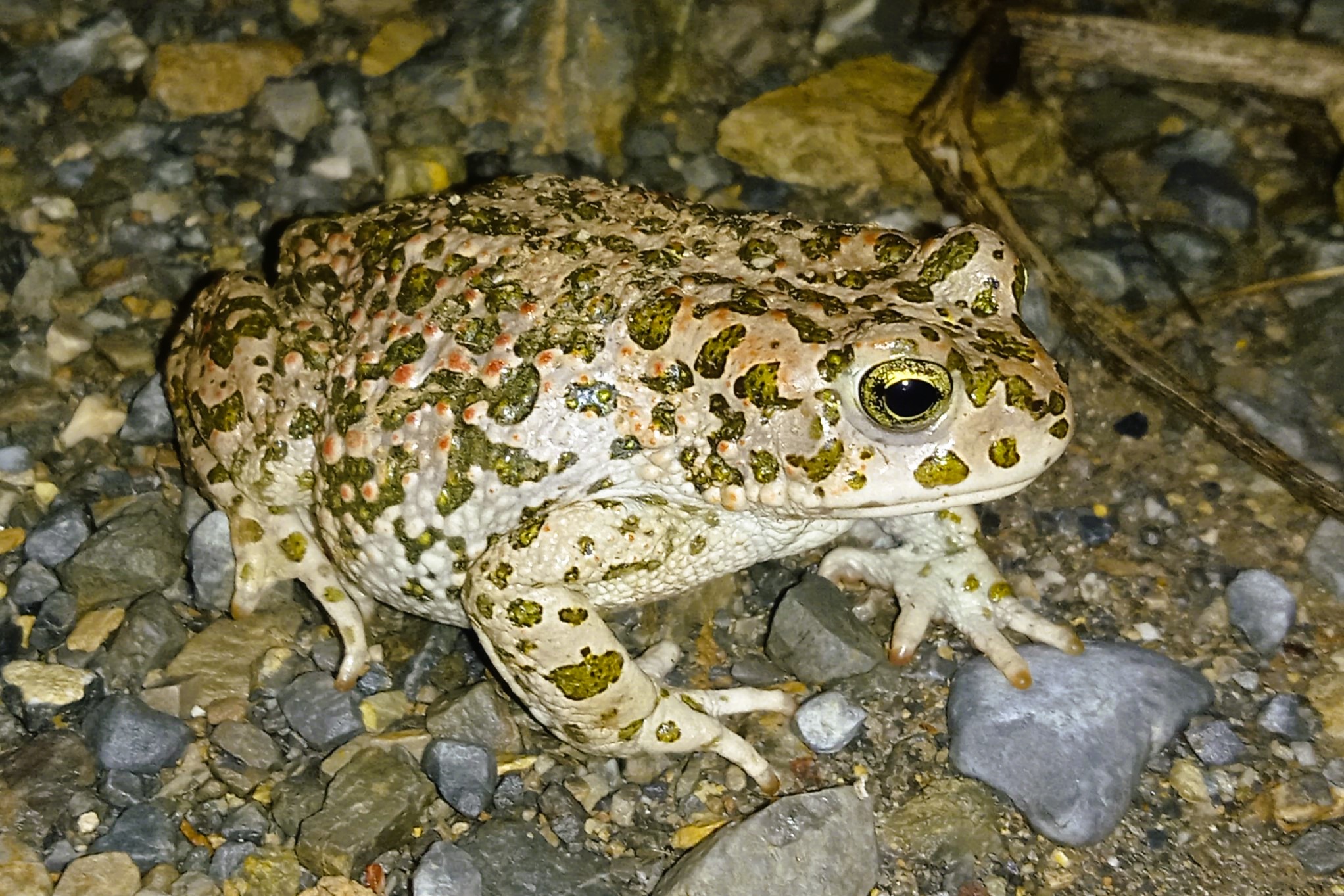

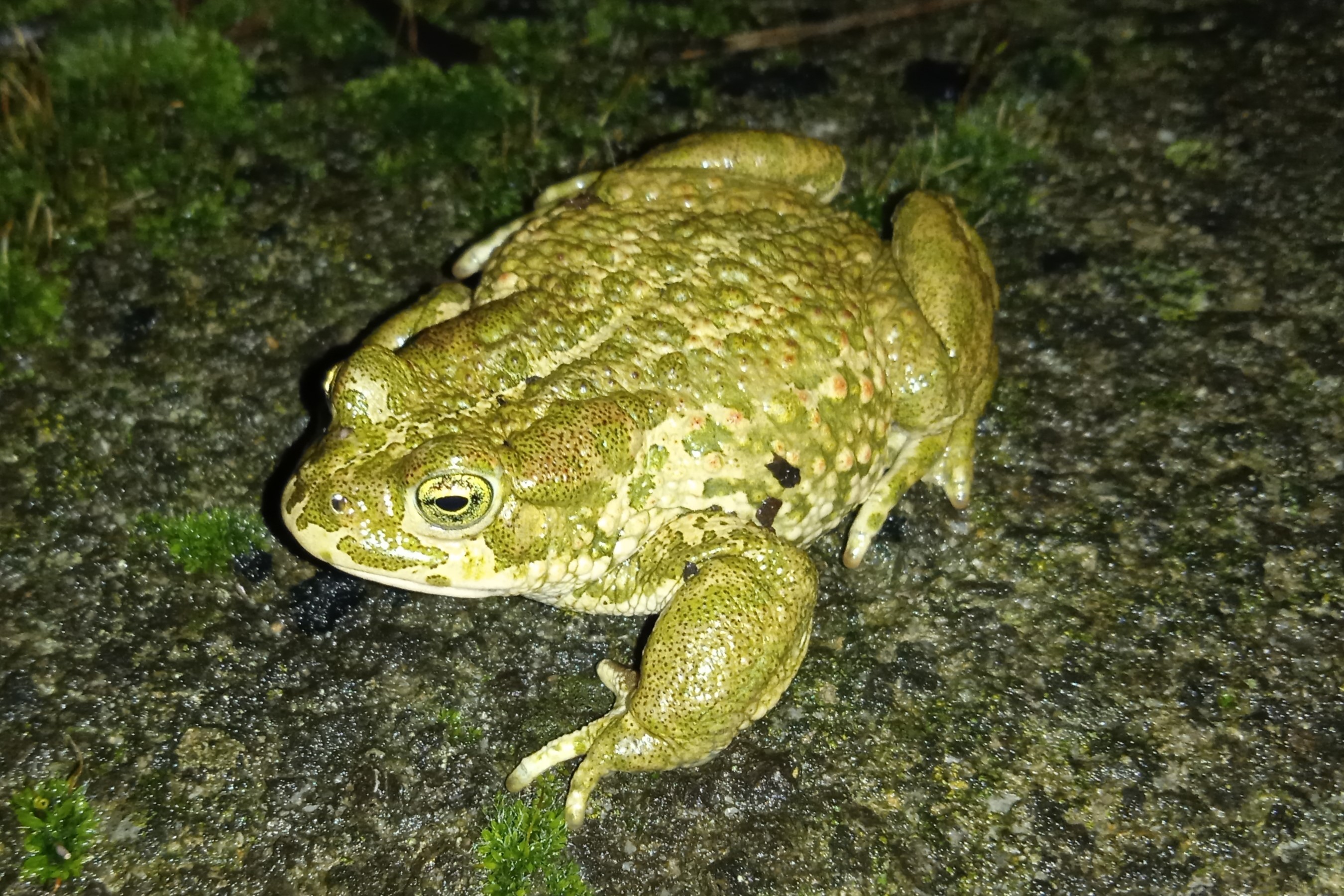
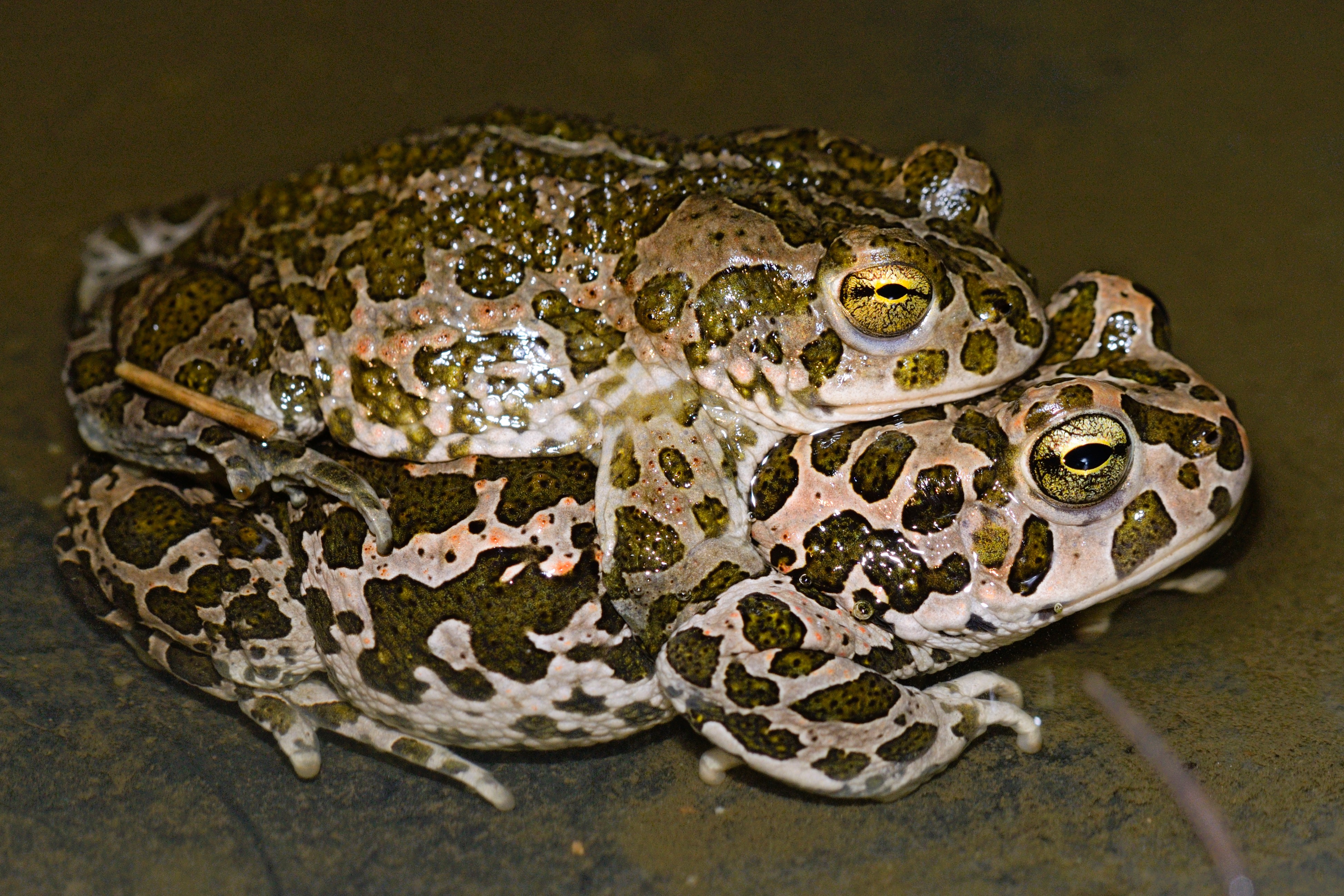
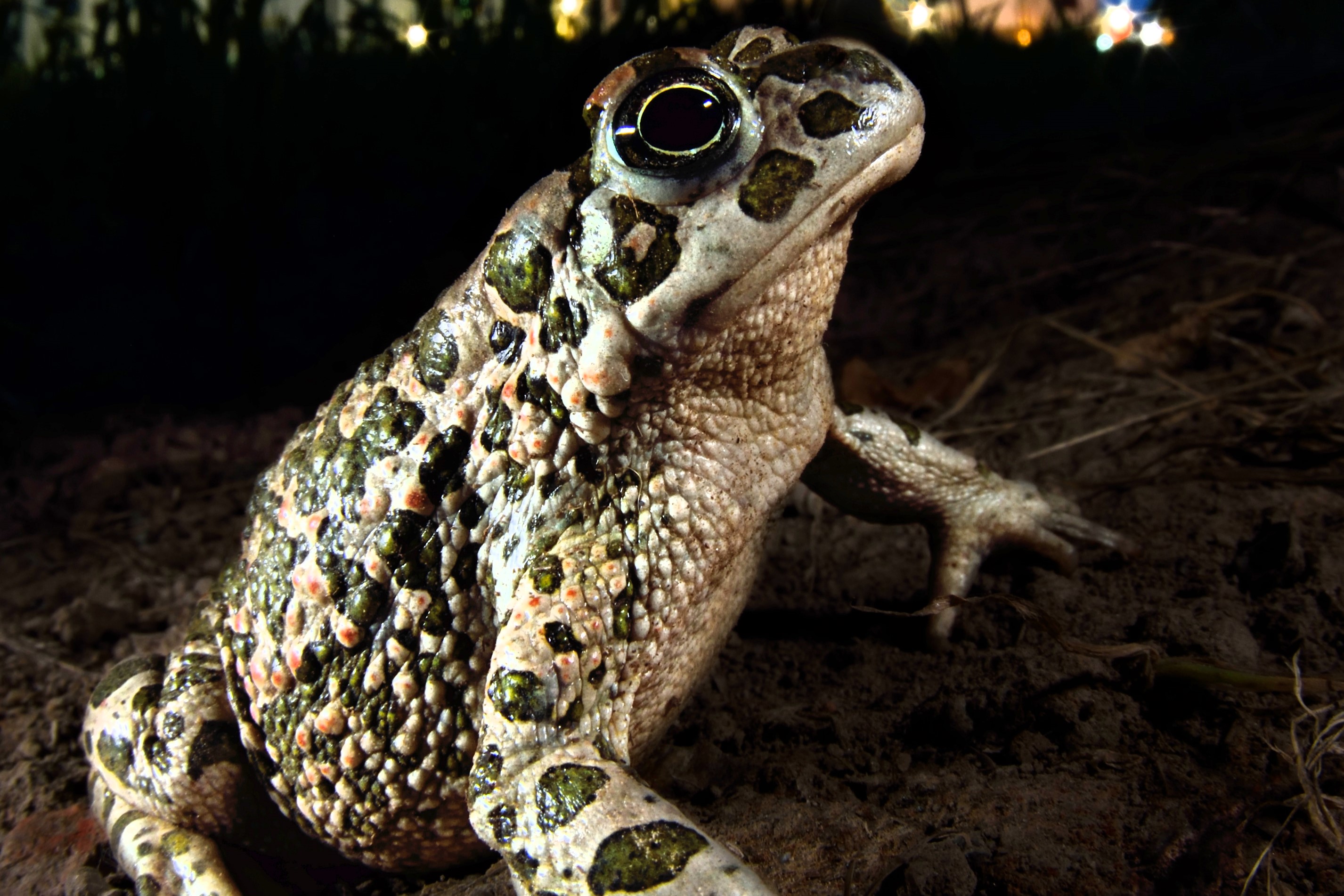
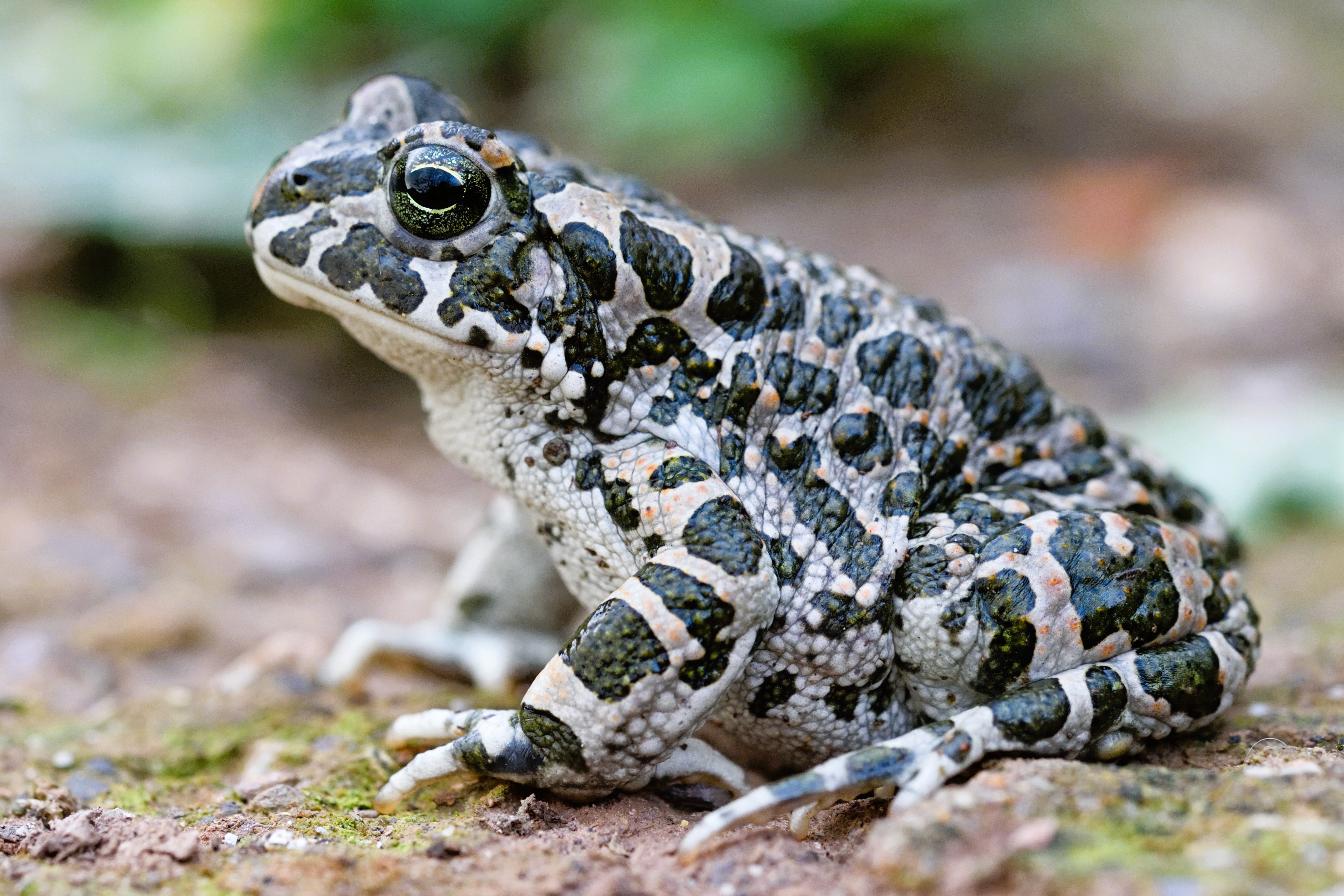
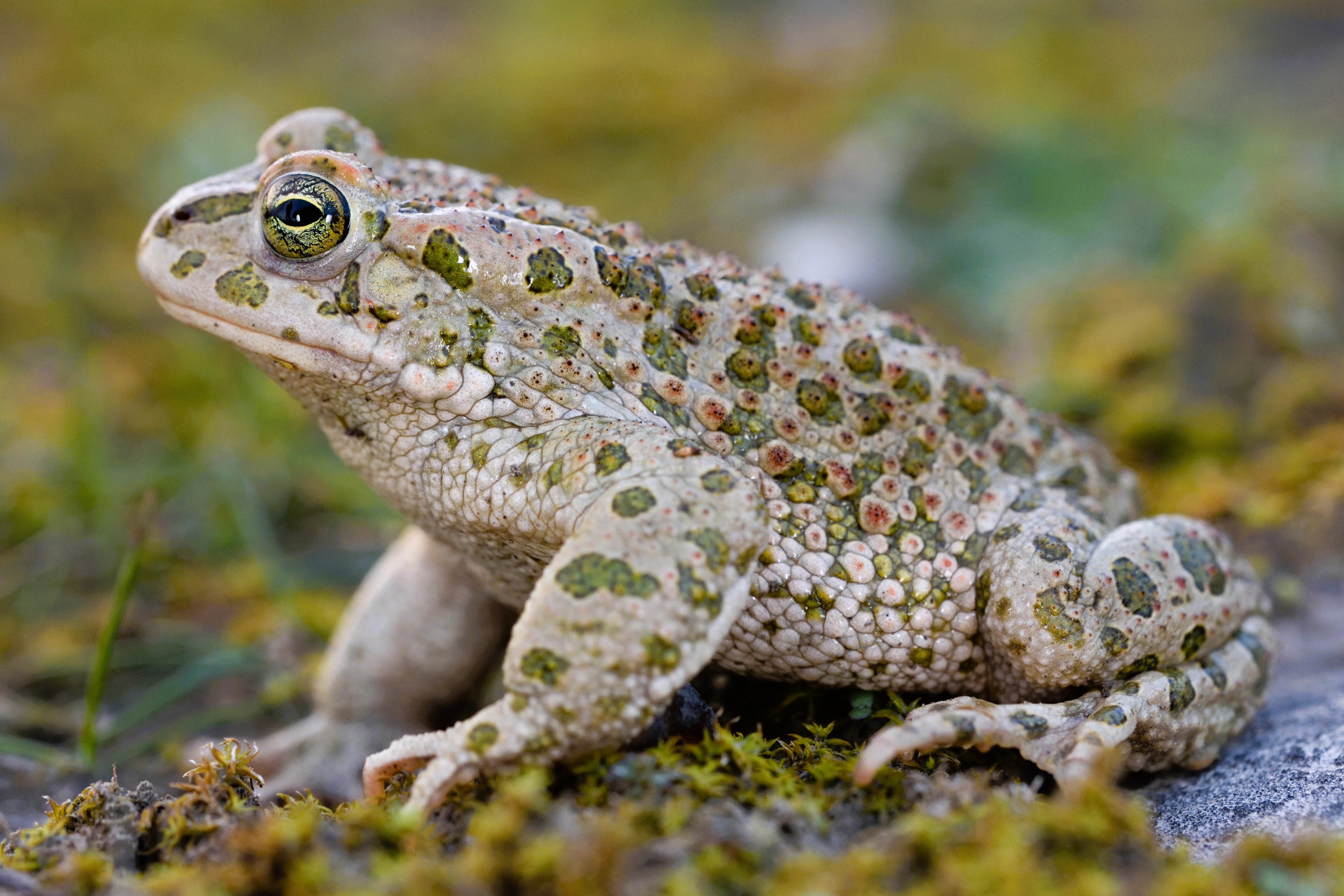
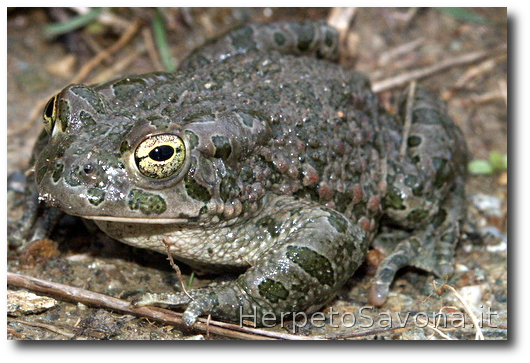
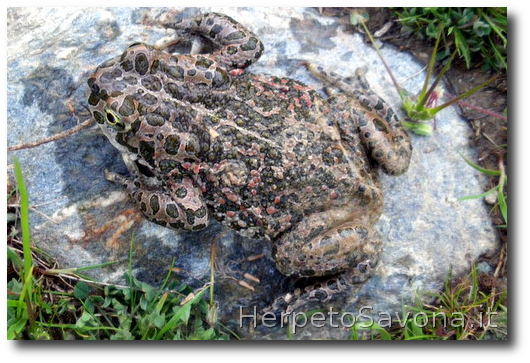
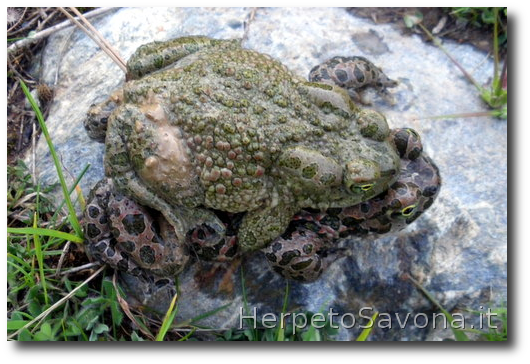
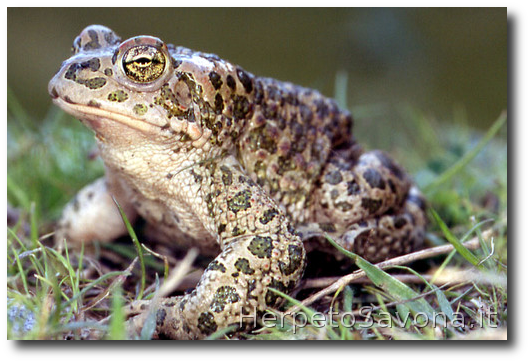
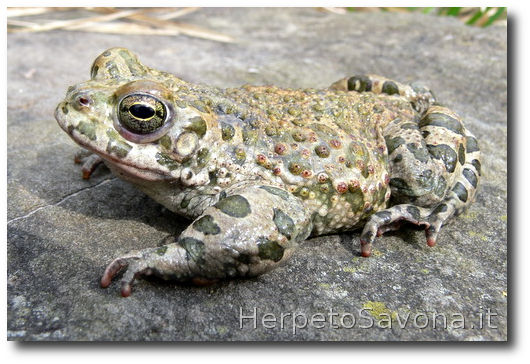
Amphibia → Anura → Bufonidae → Bufotes → Bufo balearicus
Bàggiu Verde
The Emerald Toad is an anuran of smaller and slimmer size compared to the Common Toad ( Bufo bufo ). Males reach up to 2.8 in (7 cm), while females can grow up to 4.7 in (12 cm) in length. Its appearance is unmistakable for its light coloration, ranging from light gray to creamy white, with green or greenish spots that are sometimes notably bright and wide in females. Reddish shades may be evident as well, particularly in adult females. The belly is pale, whitish or cream, and generally without noticeable spots. The eyes are striking for their yellow-green or light green iris, never coppery (unlike the Common Toad ( Bufo bufo )), and the horizontal pupil. Well-developed, almost horizontal, and prominent parotoid glands are evident on the sides of the head. During the breeding season, the male has an external vocal sac and is distinguished by its call produced in water: a melodious, prolonged trill similar to that of the mole cricket, resounding on spring evenings and attracting females toward the oviposition sites.
The Emerald Toad occupies large parts of central and eastern Europe, being absent from the Iberian Peninsula and part of Mediterranean France, but present in Corsica. In Italy, the species is widely distributed, favoring plains and coastal areas, including the Tyrrhenian coast and the Po Valley. In the province of Savona, it reaches one of the westernmost edges of its range, where a few relict populations survive in the municipalities of Savona, Cairo Montenotte, Vado, Spotorno, and Noli. Ligurian populations are often isolated and subject to fragile demographic dynamics. In the region, it extends from sea level up to about 980 ft (300 m) in elevation.
Typical of alluvial and semi-arid soils, the Emerald Toad also adapts perfectly to landscapes heavily modified by humans. It colonizes cultivated fields, vegetable gardens, stone walls, abandoned quarries, dumps, and urban environments such as parks and gardens. Its remarkable ability to tolerate both periods of drought and relatively high salinity levels makes it a constant presence also along the coast and in degraded sites, often where other species are absent.
Primarily terrestrial and with crepuscular or nocturnal habits, the Emerald Toad becomes active with evening humidity, moving through grass in search of prey. Reproduction occurs between April and June, preferably in shallow and stagnant waters such as temporary pools, abandoned quarries, and slow-moving sections of streams. Females, after axillary amplexus, lay gelatinous cords containing up to 12,000 eggs, often attached to aquatic vegetation. Tadpoles are brown in color and larger than those of the Common Toad ( Bufo bufo ), generally completing metamorphosis by July—except in case of rapid drying of the pools. The species hibernates from November to March, choosing refuges such as ground cavities, stone walls, and burrows made by small mammals.
The Emerald Toad primarily feeds on insects, earthworms, and gastropods, which it catches during its nocturnal forays. Tadpoles are omnivorous detritivores: they feed on animal and plant organic material, contributing to the biological control of aquatic biomass.
Natural predators include various snakes (such as Natrix helvetica , Natrix maura , and Natrix tessellata ), nocturnal birds of prey, and occasionally wild boars, which can devastate entire groups of larvae while searching for water. Besides predation, tadpoles are threatened by drought—especially in temporary pools that dry out prematurely. An increasing risk is the introduction of non-native fish species into breeding sites, severely endangering larval stages. Human impact is considerable: pollution, habitat destruction, and road mortality during breeding migrations are the main threats to the species' survival locally and nationally.
Bufotes balearicus has parotoid glands that secrete a defensive mixture of alkaloids and peptides, including bufotoxins and bufotenine; these substances irritate predators and are potentially toxic if ingested or in contact with mucous membranes, but do not pose a real danger to humans unless ingested or exposed to open wounds. The secretion is released by pressing on the glands, acting as a passive defense. No cases of fatal poisoning in humans have been documented, but it is always wise to avoid handling amphibians unless necessary and to wash hands thoroughly afterward.